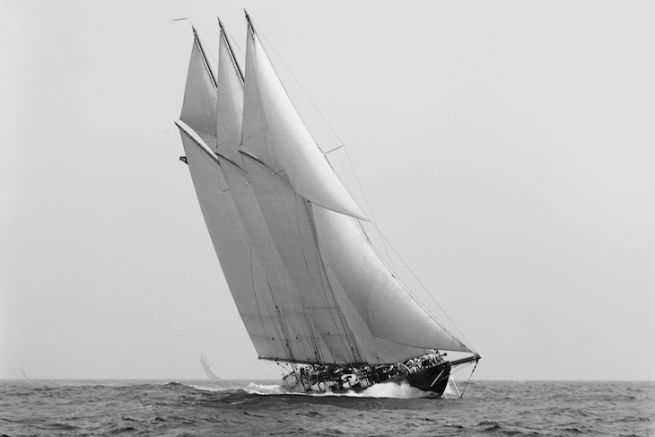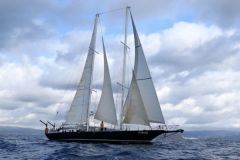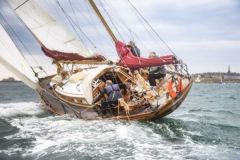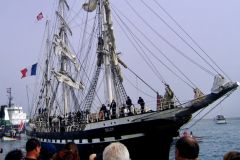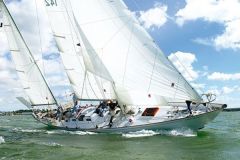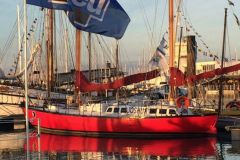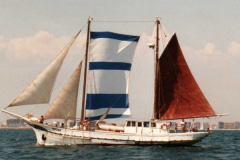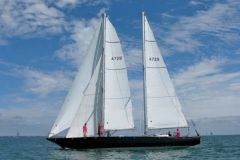The birth of the schooner Atlantic
The Atlantic is a three-masted schooner, built in the early 20th century for Wilson Marshall, a prominent member of the New York Yacht Club. Designed by William Gardner, one of the most renowned American naval architects of the time, she was built at the Townsend & Downey shipyard on the uninhabited Shooters Island in New York.
The long black steel hull, 56.39 m (185 feet) long and only 8.85 m (29.02 feet) wide, was launched on July 28, 1903. Its masts are 45 m (150 ft) high above the waterline and support an impressive 1750 m2 (1,750 m2) of sail area.
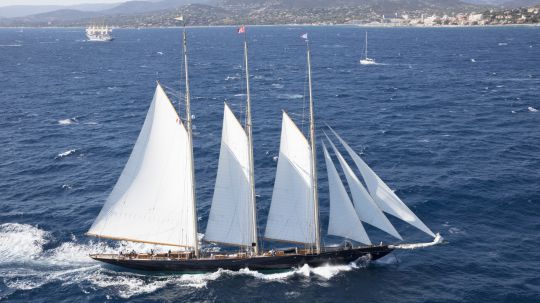
Performance combined with luxury
With its slender lines and narrow midship beam compared to its length (41.15 m at the waterline), Atlantic promises unparalleled speeds. A promise that was quickly confirmed by the first sailors who posted peaks at 20 n?uds?! Who would have thought that two years later she would become the fastest boat to cross the Atlantic.
If he wants his boat to be fast, Wilson Marshall doesn't want to compromise on comfort. So, unlike contemporary schooners, Atlantic is all luxury on board. Mahogany panels, refrigerators, a large galley, electric lights powered by two steam generators are just some of the features of the boat. Steam was also used to power the 36 winches in bronze?!
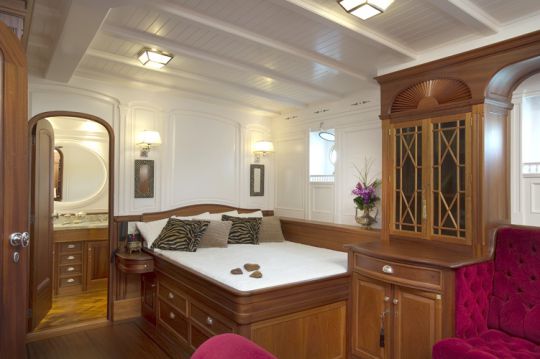
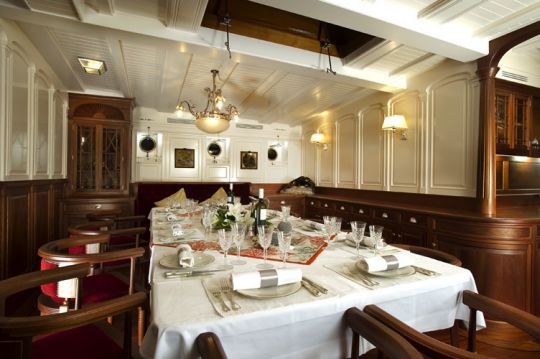
On board there are two double and three single cabins, a splendid saloon/dining room, a very large chart table and three large bathrooms - the owner's with bathtub. Access on board is at the bow for the crew and at the stern via the "Deck House" for the guests, a sort of vestibule.
The retractable steam evacuation chimneys allowed to keep all the onboard conveniences, even while sailing (heating, lighting, refrigeration...). 39 crew members lived on board throughout the year.
The king of regattas
For its first season, the Atlantic proved to be very fast and won Breton Reef and the Cape May Cup hands down. But it wasn't until 1905 that the schooner made headlines and forever marked sailing history by winning the Kaiser's Cup, a transatlantic race between Sandy Hook, on the coast of New Jersey (US) and Cape Lizard, in Cornwall.
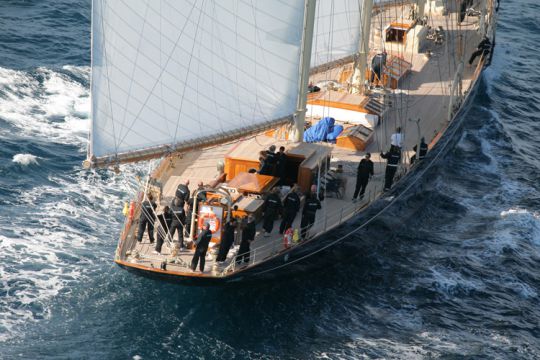
The Kaiser's Cup record
In 1905, the German Emperor William II decided to create the first transatlantic crossing from west to east, between the United States and England. A total of 11 yachts belonging to wealthy American and British shipowners took the start of this new race. The winner will be awarded a solid gold cup, which according to rumours was in the end only a "knock-off" trophy. The schooner Atlantic is of course there, but also Hamburg, the Kaiser's sailing ship.
Wilson Marshall entrusted the helm of his elegant sailboat to "Captain Charlie Barr". This professional Scottish sailor - naturalized American - enjoys an incredible reputation and boasts the distinction of being the first three-time winner of the America's Cup (1899, 1901 and 1903).
With a crew of 50 men, Charlie Barr - renowned for pushing his boats 100% - is making an express Atlantic crossing. He made the schooner a legend by setting many records in stone. A crossing of 3006 miles in 12 days, 4 hours, 1 minute and 19 seconds and the distance record in 24 hours with 341 miles covered at an average speed of 14.1 knots.
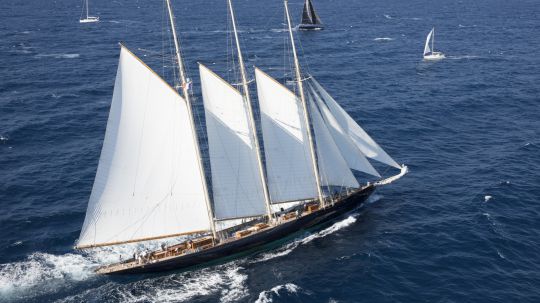
A 75-year record
For 75 years and despite many attempts, this Atlantic crossing record remains undefeated. It was a certain Éric Tabarly at the helm of his trimaran Paul Ricard who brought it down in 1980. With three crew members, he completed the crossing in 10 days, 5 hours, 14 minutes and 20 seconds.
However, we still have to wait nearly 100 years (93 to be exact) for a monohull to beat the Atlantic record. It was an 80-foot (24.5 m) monohull named Nicorette (later renamed Skandia), which completed a crossing in 11 days, 13 hours, 22 minutes and 4 seconds while taking part in the Round Gotland Race.
